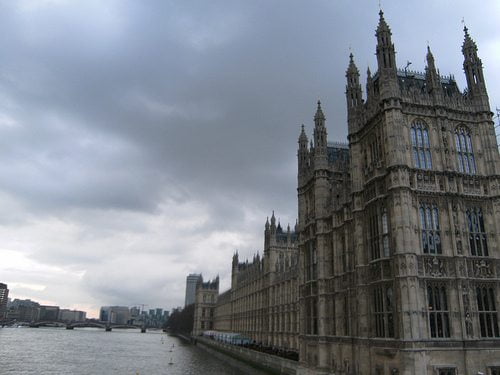

Environment
Sustainability: how far have we come?
Since 2011 what changes have taken place in the realm of sustainability and politics? The ‘Greenest Government’ supposedly stepped into Downing Street, and as a young professional in the industry, it was looking very positive, writes Hayley Williams.
The overarching emissions reduction target has been to achieve an 80% reduction in emissions by 2050 (from 1990 levels), so the question is, are we any closer four years down the line? In 2014 the Committee on Climate Change (CCC) reported a 25% reduction on 1990 levels, which showed promise. This report to Parliament also confirmed that the first carbon budget was met, mainly due to the recession and the implementation of policies. However, the CCC suggested that to continue in this vein, policies needed to be strengthened to ensure significant carbon reductions.
As a young professional developing in the industry there have been some policy and regulation changes, which may question the Government’s commitment to the legally binding targets.
The Green Deal scheme was launched at the beginning of 2013 with the aim to improve the energy efficiency of the existing building stock; however there was very little take up of the scheme. With particularly high interest rates it was seen as a costly way to improve a building’s energy performance. After 18 months the scheme was revived, making it much more appealing. This has now resulted in oversubscription, and it is closed for applications. To be successful and sustainable, a scheme needs credibility and stability, which does not appear the case for the current scheme.
Building regulations have been revised, specifically Part L in relation to conservation of fuel and power. The most recent edition (2013) of the Approved Document came into effect in April 2014. These revised regulations require domestic buildings to be 6%, and non-domestic 9%, more efficient than the previous regulations. This could be argued as not being enough to drive the sustainability agenda forward and to meet the legally binding targets.
Hand in hand with this, the Government’s Housing Standards Review in 2013-2014 resulted in the “winding down” of the Code for Sustainable Homes scheme. This scheme provided a straightforward route to developing zero carbon homes. The scheme used a star system (1 to 6) to rate new homes, with level 6 being zero carbon.
Zero carbon homes are still due to be delivered in 2016. One of the main components of this being Allowable Solutions. This allows developments that cannot cost effectively off set their carbon emissions on site, to invest in local projects. It is imperative that this mechanism is monitored effectively, and the cost of carbon is set to a level to encourage the best design of homes on site. Otherwise the scheme will not function as intended.
Ideally homes developed should be zero carbon without Allowable Solutions. Building homes that cannot be self-sufficient could be more problematic in the future, and further retrofitting may be required to reduce carbon emissions to nil. Potentially leaving more challenges for the next generation.
The Feed-in-Tariff (FIT) scheme has also proven controversial. Changes made by the Government late in 2011 resulted in uproar from the industry and customers. The Government was taken to court, and subsequently lost. They appealed the decision, but the Supreme Court rejected the appeal. The reduction in the FIT was not opposed to; it was the way the Government went about enforcing the changes. This understandably seemed to reduce the public’s trust in the Government. It also questioned the lack of support from the Government for renewable technology installations, and consequently carbon emissions and the environment.
Over the last 4 years, there have been positive steps towards implementing policy that should reduce the countries carbon emissions. However, the negativity puts doubt in the minds of the general public. In 2011 George Osborne stated that green policies are a “burden” and “ridiculous cost to British Businesses”. These type of comments are negative and do not assist in pushing the sustainability agenda forward. It also consolidates the non-believing population’s opinions of climate change and sustainability.
Most recently UK party leaders have pledged to tackle climate change after the next election. They have agreed to work towards a legally-binding global climate deal to agree new UK emissions-cutting goals. But what does this actually mean? Surely the current Government should have had the issue of climate change high on the agenda already. As a young professional, I do question whether this is a hollow pledge.
Hayley is a sustainability professional with a Masters in Climate Change and Sustainable Development. Having worked in the industry since 2010 she has a passion for, and understanding of, the current issues around sustainability.
Photo: shining.darkness via Flickr
Further reading:
Cameron, Clegg and Miliband sign joint climate change agreement
General election 2015: a stark choice for voters in five weeks
Sustainability could hold the key to 2015 general election result
‘Greenest government ever’ has failed the environment, NGOs say


 Environment10 months ago
Environment10 months agoAre Polymer Banknotes: an Eco-Friendly Trend or a Groundswell?

 Environment12 months ago
Environment12 months agoEco-Friendly Home Improvements: Top 7 Upgrades for 2025

 Features9 months ago
Features9 months agoEco-Friendly Cryptocurrencies: Sustainable Investment Choices

 Features10 months ago
Features10 months agoEco-Friendly Crypto Traders Must Find the Right Exchange




























